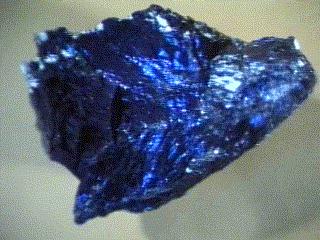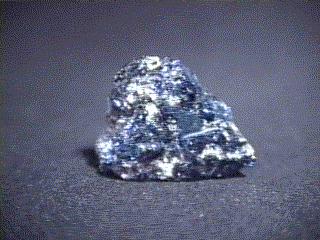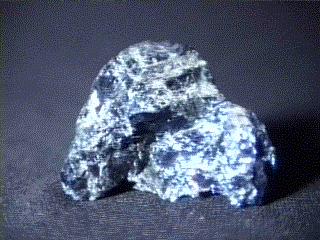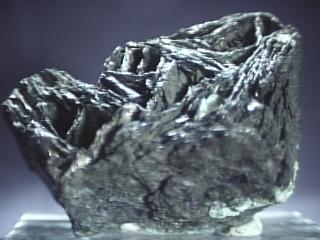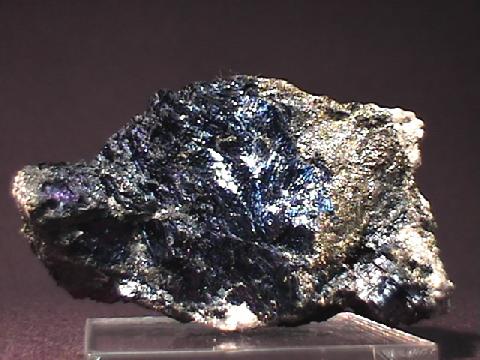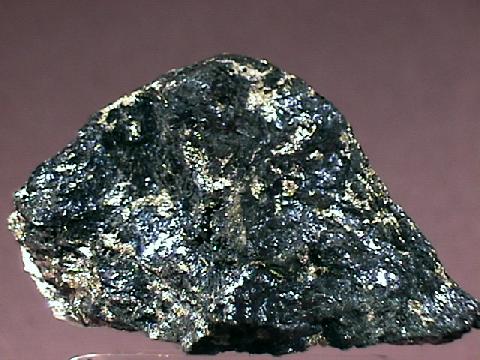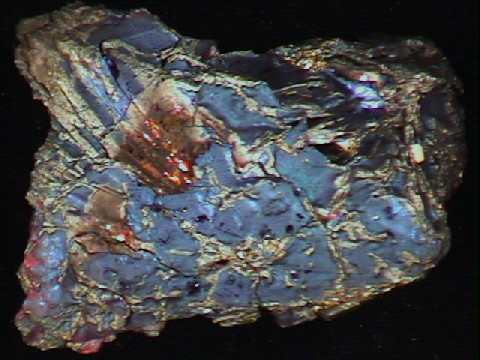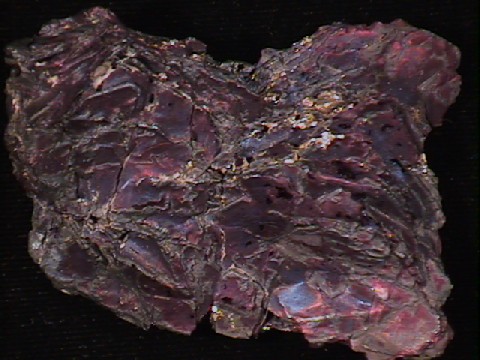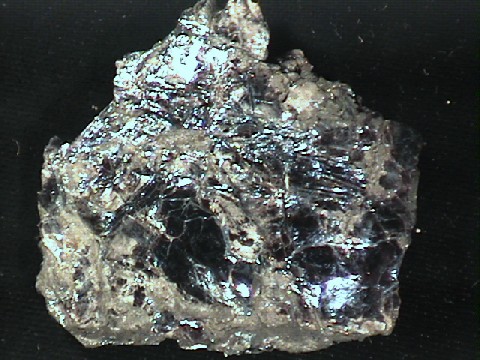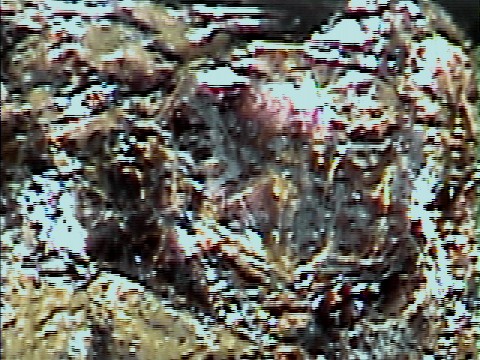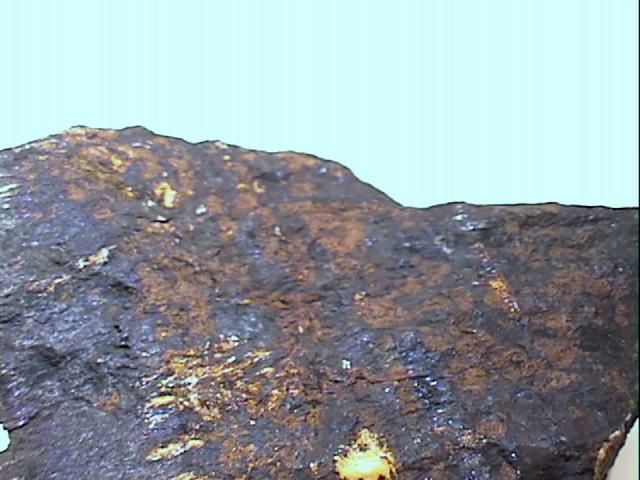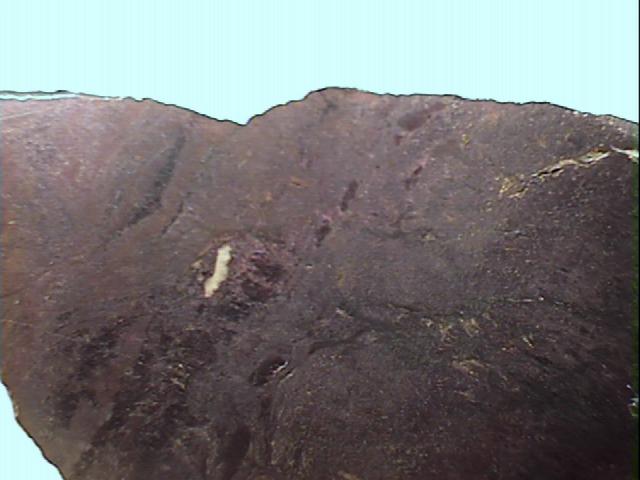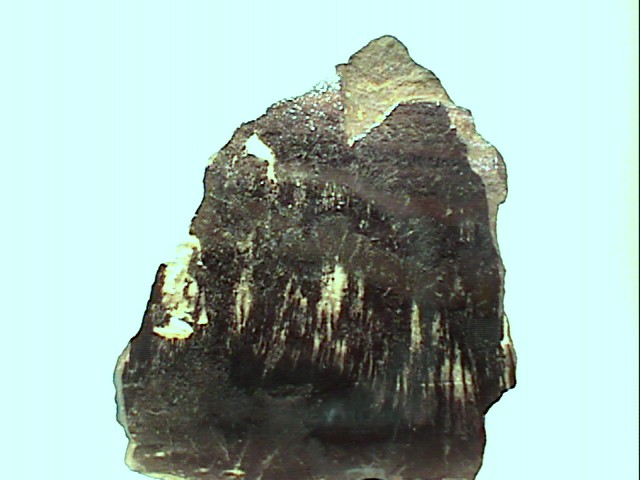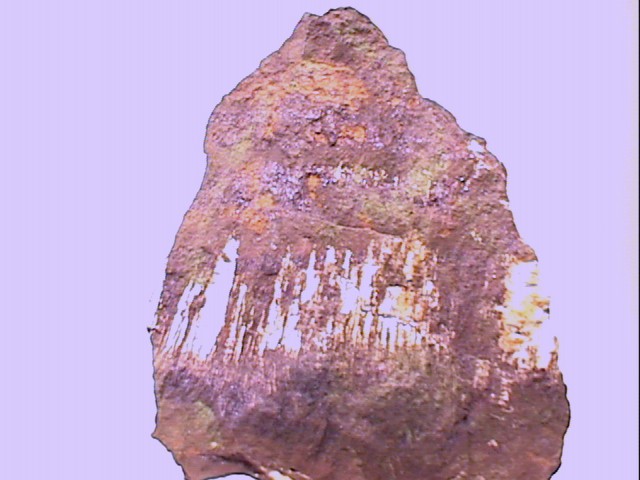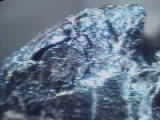 THE MINERAL COVELLITE
THE MINERAL COVELLITE
- Chemistry: CuS, Copper Sulfide
- Class: Sulfides and Sulfosalts
- Uses: minor ore of copper and as mineral specimens.
- Specimens
Covellite is not a well known or widely distributed mineral.
But its iridescent charms can captivate the admiration of anyone that looks at the indigo blue crystals.
Although good crystals are rare, it is the luster and color of this mineral that make it noteworthy.
The structure of covellite is somewhat analogous to the structures of the
phyllosilicate minerals.
In covellite some of the copper ions are at the center of sulfur tetrahedrons that are linked on their bases to form sheets.
The other copper ions are combined with three sulfur ions in flat triangular groups similar to the triangular groups of the typical
carbonates
These triangular groups lie in a plane between the tetragonal sheets.
The perfect cleavage of covellite into sheets is easily explained by this structure.
PHYSICAL CHARACTERISTICS:
- Color is a deep metallic indigo blue (tarnished to purple or black) with iridescent yellow and red flashes.
- Luster is metallic
- Transparency crystals are opaque to translucent in very thin cleavage sheets.
- Crystal System is hexagonal; 6/m2/m2/m
- Crystal Habits: thin platy hexagonal crystals dominated by pinacoidal faces, usually on edge.
Also massive and in small grains in sulfide ore bodies.
- Cleavage is perfect in one direction forming thin sheets.
- Fracture is flaky.
- Hardness is 1.5 - 2.
- Specific Gravity is 4.6 to 4.8
- Streak gray to black.
- Associated Minerals include pyrite, chalcocite, chalcopyrite, cuprite, bornite and other copper sulfides.
- Other Characteristics: thin cleavage sheets are flexible.
- Notable Occurances Butte, Montana; Bor, Serbia; Germany; Austria and Sardinia.
- Best Field Indicators are crystal habit, cleavage, density, iridescence and color.
 THE MINERAL COVELLITE
THE MINERAL COVELLITE
